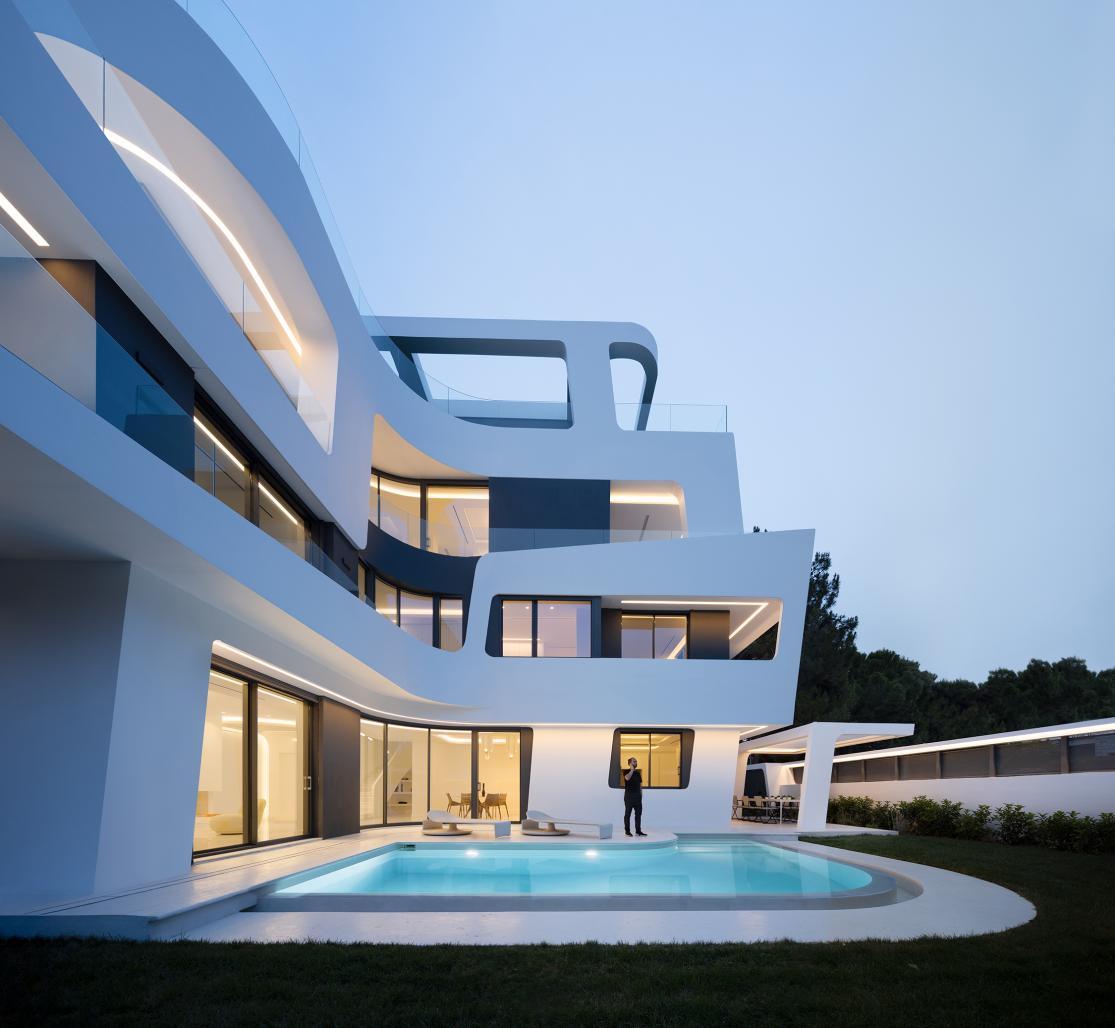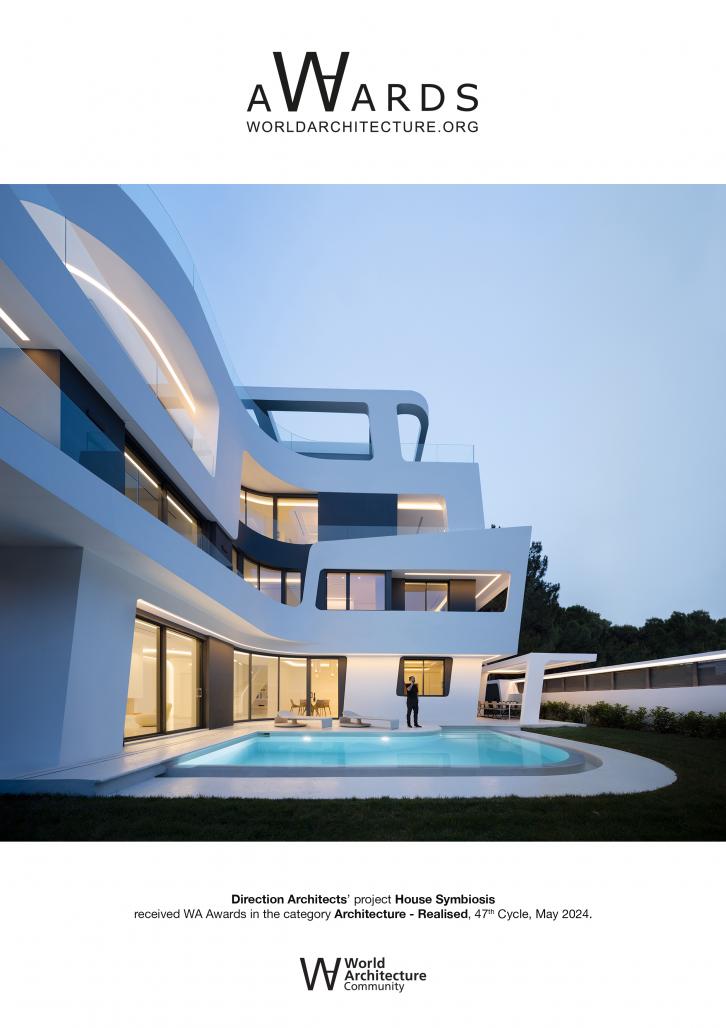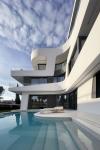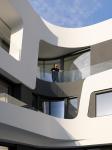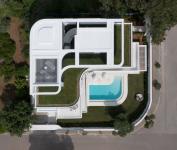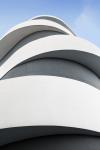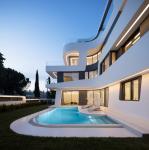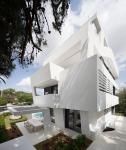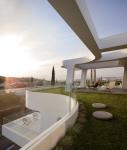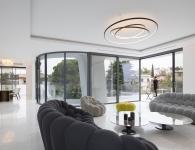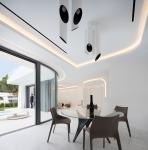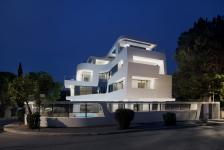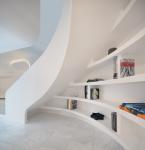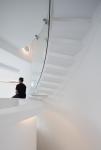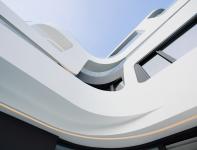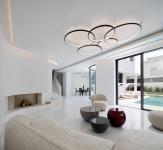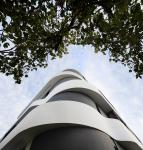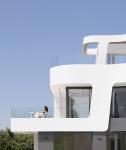House Symbiosis by Direction Architects is an innovative double residency located in Athens Greece, designed to accommodate two sibling families seeking to foster close bonds while preserving individual privacy. The house responds to the evolving demands of contemporary living, emphasizing familial bonds and offering a nuanced balance between communal and individual living. The primary challenge involved navigating the delicate equilibrium between privacy and socialization for the two families. Experimentation with geometry, spatial orientation and volumetric massing addresses this challenge. The project's emphasis on internal circulation drove the design process, adopting a sculptural tectonic approach reflected in the massing of the final structure. The resulting curvilinear formal language imparts a sense of dynamism and motion to the living spaces. The house gives the impression of heading towards two opposite directions.
In a fast paced ever changing world, what matters most is spending more time with the people that we care about. The main scope of the brief was to create a new typology for a double residency to shelter two sibling families, that want to spend more time together, while in the same time maintain their own private spaces. As a result, House Symbiosis, was born. The project showcases innovation in design and sustainability, as well as from a socio-anthropological perspective. In the same time the project has an existential character, while it can be interpreted from a philosophical point of view. It is looking at matters such us co-existence and preserving familial bonds and values in an ever more alienating world, where people tend to isolate themselves easier. In terms of design the project is introducing an innovative formal language, while gaining inspiration from the yacht, aerospace and automotive industries. The resulting curvilinear geometries impart a sense of dynamism and motion to the living spaces. The main challenge of the project was to create a balance between privacy and socialization for the two families. The volumetric displacement of the facades generates balconies and cantilevers, strategically limiting visual contact between interiors and creating secluded outdoor spaces. A sculptural ribbon-like geometry on the front inner facade creates an impression of a moving structure. A pool on the ground level located close the house, also adds up to this experience. The project designed based on the internal horizontal and vertical circulation and the sequential layout of the spaces according to their functional dependence. The internal circulation is externalized in the morphology of the facades through directional architectural gestures, with the lower residency to unfold as its spaces are successively accessible, from the northwest to the southwest, while the upper one in the opposite direction. House Symbiosis distinguishes itself by introducing an architectural interplay between motion and static elements. It caters to the cultural context of Greek families desiring close proximity for their children, while addressing the shifting paradigms of post-pandemic residential preferences. Its innovative design redefines the conventional understanding of a double residency, offering an architecture that harmonizes private and shared spaces, thereby fostering enduring connections.
House Symbiosis has a profound social character through its distinctive architectural composition. Its unconventional spatial organization bringing together two families in close proximity and its design approach while positioning social outdoor spaces on the heart of the project, addresses a series of questions in terms of architecture and human relationships. While the project works as a case study on bringing people closer in a residential context in the same time could teach us greater lessons in the subject of symbiosis in society and on the topic of building stronger communities through well thought architectural compositions. The overall flexibility and adaptability that House Symbiosis offers aligns with basic principles of inclusive design in a residential context. House Symbiosis embodies a strong cultural ethos, catering to the timeless desire of Greek families for close-knit living arrangements. In a post-pandemic world where the importance of community and connection has never been more apparent, this design approach aims to redefine the very essence of family living.
2019
2023
The house is located at the rear of a corner plot, forming an L shape in plan, leaving the front part as open space. The site allowed for a maximum of 40% plot coverage from which only the 27% was built. This planning approach shows an environmental conscious attitude to architecture, while allowing space for external communal areas for socialization as well as greenery. Internal spatial organization is guided by horizontal and vertical circulation, with sequential layouts aligning spaces based on functional dependence. The residences, while appearing to move in opposite directions, share a continuous formal language within a single building mass. In terms of construction, the main structure was raised up level by level through various types of wooden formworks for concrete casting. In some cases, where there were double curved geometries, it was required the combination of multiple formworks in order to achieve them. A main sculptural element of the project is a ribbon-like geometry with parts of double curvature, which unfolds on the front inner facade of the building. In order to construct this complex geometry, a detailed formworking procedure was required with the usage of horizontal and vertical formworks. In regards to materiality, the main final finishes of the project were different types of terrazzo with marble mosaic pieces for its exterior spaces and marble and wooden floorings for its interiors, allocated based on the function of each space.
Sustainability is also a central aspect of the project. The building has an A classification in energy efficiency, which means that is an almost zero energy building. To achieve this, all the latest cutting-edge technologies have been implemented in combination with a well thought eco-friendly design approach, while incorporating several green elements into the design. The project prioritizes also sustainability by optimizing building orientation to maximize sunlight exposure. An important part of the design was the green roof in combination with the garden to create a green footprint in plan of the order of 75% of the overall coverage. The building uses renewable energy sources with the use of geothermal energy for heating and cooling needs, as well as photovoltaics to balance the electricity consumption. The combination of these systems leaves an almost zero-ernergy footprint.
Architecture: Direction Architects
Photography: Studio Naaro
Architect Designer: John Kanakas
Architect Engineer: Kostas Christopoulos
Civil Engineers: Christos Tzallas and Panos Christopoulos
Electrical/Mechanical Engineer: Vasilis Christopoulos
Energy and Sustainability Consultant: Regeon
House Symbiosis by John Kanakas in Greece won the WA Award Cycle 47. Please find below the WA Award poster for this project.

Downloaded 0 times.
Favorited 1 times
